



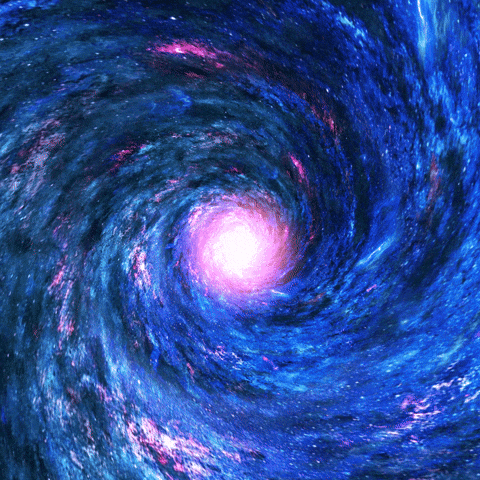


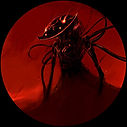
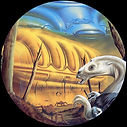

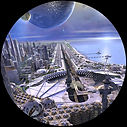

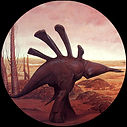





ALIEN OBSERVATION & UFOs. Here’s why


For millennia, humans have seen inexplicable things in the sky. Some have been beautiful, some have been terrifying, and some — like auroras and solar eclipses before they were understood scientifically — have been both. Today’s aircraft, balloons, drones, satellites and more only increase the chances of spotting something confounding overhead.
In the United States, unidentified flying objects, or UFOs, came into the national spotlight in the late 1940s and early ’50s. A series of incidents, including a supposedly crashed alien spaceship near Roswell, N.M., generated something of an American obsession. The Roswell UFO turned out to be part of a classified program, the remnants of a balloon monitoring the atmosphere for signs of clandestine Russian nuclear tests. But it and other reported sightings prompted the U.S. government to launch various projects and panels to investigate such claims, as Science News reported in 1966 (SN: 10/22/66), as well as kicking off hobby groups and conspiracy theories.
Tell us about your Science News experience
Help us improve by taking our 15-question reader survey.
In the decades since, UFOs have often come to be dismissed by scientists as the province of wackos and thus unworthy of study. The term UFO has a smirk factor to it, says Iain Boyd, an aerospace engineer at the University of Colorado Boulder and director of the school’s Center for National Security Initiatives.
But government agencies and officials are trying to change that attitude. Among the biggest concerns is that the stigma associated with reporting a sighting has the side effect of stifling reports from pilots or citizens who might have valuable information about potential threats in U.S. air space — such as the Chinese spy balloon that traversed North America and made headlines last year.
“If there’s something interfering with flights, people or cargo, that’s a problem,” Boyd says.
To help reduce the stigma, many serious investigators now refer to UFOs as “unidentified anomalous phenomena,” or UAPs, coined by the U.S. Department of Defense in 2022. “The term UAP brings science to the issue,” Boyd says. It also rightly broadens the view to include natural atmospheric phenomena as well as things outside the atmosphere, such as satellites and particularly bright planets such as Venus.
An independent team of experts (shown meeting in 2023) suggested NASA help fill in gaps in collecting UAP data.Joel Kowsky/NASA
Investigators of all types have a lot of questions about UAPs that they believe deserve serious scientific scrutiny: Which UAPs are something real and which are merely artifacts of the sensors that detect them? If real, which may be a threat to aviation? A threat to national security? Do they point to some unknown natural phenomena?
Answers may be forthcoming. In June 2022, NASA announced an independent study to determine how the agency could lend its scientific expertise to the study of UAPs. Meanwhile, military and commercial pilots have felt more comfortable making reports and even providing videos taken during close encounters. Some of those reports were discussed as part of congressional hearings in 2022 and 2023, which were covered widely by the media and in part focused on more government transparency (SN: 5/19/22). Those were the first open hearings since the mid-1960s.
Americans for Safe Aerospace, an advocacy organization with a focus on UAPs, supports legislation that would help provide a way for pilots to confidentially report potential sightings to the government.
And government agencies increasingly recognize publicly that strange phenomena in the skies are worthy of attention — whether the phenomena are signs of aliens or not. In 2022, the Pentagon established the All-domain Anomaly Resolution Office to serve as a clearinghouse for government reports of UAPs and for analysts determining if UAPs pose threats. The National UFO Reporting Center, a nonprofit established in 1974, and other organizations continue to collate reports from the public.
By bringing UAPs into the realm of science, the hope is to make the unexplained explainable.
Sponsor Message
Where do UAP sightings occur?
Since its founding, the National UFO Reporting Center has kept a database of UAP sightings, including past and recent incidents reported through its telephone hotline, the mail and online. The database includes almost 123,000 sightings in the United States from June 1930 through June 2022. It’s a trove of data that few if any peer-reviewed scientific studies have used, says Richard Medina, a geographer at the University of Utah in Salt Lake City.
For a study reported in 2023, Medina and colleagues scoured the database to see if they could identify which factors, if any, might affect the number of sightings in a particular area. They focused on the almost 99,000 reports, or about 80 percent of the total, that came from the continental United States from 2001 through 2020. They stuck to the continental United States because tree cover was a factor they were studying, and detailed maps of forested land aren’t available for Alaska’s interior.
First, the researchers calculated the number of UAP sightings that occurred in each county in the Lower 48 states for the 20-year period. Then, they tried to correlate the number of sightings per 10,000 people that lived in each county with environmental factors.
In their sights
An analysis of nearly 99,000 reported UAP sightings pinpointed U.S. counties with a particularly high number of reports per 10,000 people (reddish counties), a low number of reports (blues) and an average number (white). One factor that appears to boost the number of UAP sightings is proximity to an airport or military installation, a hint that aircraft may account for many UAPs.
R.M. Medina, S.C. Brewer and S.M. Kirkpatrick/Scientific Reports 2023 (CC BY 4.0)
As expected, UAP sightings weren’t as frequent in counties with a lot of tree cover and large amounts of nighttime light pollution, the researchers reported in Scientific Reports. Average cloud cover didn’t seem to affect the number of sightings one way or another — but maybe that’s because the team looked at average cloud cover over the course of the year, not the amount of cloud cover at the time of the sighting, Medina suggests.
What did boost the number of sightings substantially was proximity to airports or military installations. Although this analysis doesn’t specifically say that many UAPs in such areas can be attributed to aircraft associated with those facilities, the data are suggestive, Medina notes. At such sites, aircraft are likely to be closer to the ground and more visible than at other places, he adds.
And many of those aircraft could have been classified or experimental craft, according to a report issued earlier this year by the All-domain Anomaly Resolution Office. After undertaking an analysis of reports made to or by the government since 1945, that office found that many sightings could be attributed to never-before-seen craft such as rockets, drones or aircraft incorporating stealth technologies. The analysis found no evidence that any UAPs were signs of extraterrestrials and no evidence that the U.S. government ever had access to alien technology.
A second report, with new analyses focused on more recent sightings, will be released later this year.
What are UAPs?
The task of pinning down the sources of UAPs has become easier thanks to the ever-growing analytical prowess of computers and advanced visualization tools. “What used to take months of analysis before can now be done in just a few minutes,” says Mick West, a retired software engineer in Sacramento, Calif., who runs the website Metabunk.org, where people can post and discuss UAPs and other unusual phenomena.
Take, for instance, an enigmatic sighting of lights in the sky over the Great Plains one night early in 2023. Video of the UAP taken by a commercial pilot in flight caused a stir when it was posted online soon after the sighting, West says.
Whoever posted the video didn’t include specifics about the sighting, other than to say it was taken somewhere over the central United States on a particular date. A pattern of lights on the ground, which turned out to be warning lights atop turbines in a large wind farm, helped investigators on Metabunk locate the plane as somewhere in western Oklahoma.
Certain details about the sighting, such as flashes of lightning on the distant horizon, wouldn’t have occurred on the supposed date of the video, West notes. Using public meteorological databases about the times, dates and locations where lightning strikes occur, the Metabunk crew figured out the video actually had been taken a few days earlier than reported. The date, in turn, helped the group figure out which flight the video was taken from.





Why aliens might already know that humans exist
Alien astronomers might be looking in our direction from distant planets. What would they see?
We've been searching the heavens for some time now. But despite decades of listening for tell-tale radio signals and hunting for signs that other worlds might be even vaguely habitable, it's been slim pickings so far. While astronomers have identified a few possible candidates for where life might conceivably exist elsewhere in the Universe, along with the odd mysterious signal, there is yet to be any concrete evidence of alien life out there.
This article is part of a week of special coverage about extraterrestrial life – all to mark the upcoming 60th Anniversary of the BBC's most famous alien lifeform, Doctor Who.
But what if there was? And what if they were looking back, trying to find us? Would they know there is life on Earth?
That's a question scientists have had to grapple with in recent years, as we continue to inadvertently broadcast our presence out into the galaxy. "Hold the mirror up to yourself in space, and what would they see of us?" says Jacqueline Faherty, an astrophysicist at the American Museum of Natural History in the US. "We're looking. That means other worlds might be looking too."
To date, we have found more than 5,500 planets orbiting other stars in our galaxy, called exoplanets. But such observations are in their infancy – trillions of worlds are likely scattered throughout the Milky Way. Upon some of these worlds we have started to hunt both for the chemical signatures in their atmospheres that might indicate biological activity and even technosignatures that might be emitted by intelligent life forms – radio signals either purposefully or accidentally sent in our direction.
Earth has been unabashedly broadcasting its own presence into the galaxy for about a century now. The most notable period was from 1900 up to World War Two, says Howard Isaacson, an astronomer at the University of California, Berkeley in the US, when our radio transmissions were stronger. "They needed to be more powerful because the radios that people listened to didn't have as sensitive receivers," he says.
We continue to broadcast radio signals today, from TV shows to satellite communications, but in a less detectable way. "Radio stations don't want to broadcast into space," says Thomas Beatty, an astronomer at the University of Wisconsin in the US. "They want to broadcast to the ground." Other more modern forms of communication, like mobile phone signals, are unlikely to be detectable.
Nasa/JSC
The light pollution produced by our cities is visible from the ISS, but is likely not widespread enough to attract the attention of distant alien astronomers (Credit: Nasa/JSC)
But not all of our signals are so faint. Across the Solar System we have multiple spacecraft exploring different locales such as Mars, Jupiter, and even the outer reaches of the Sun. The furthest of these, Nasa's Voyager 1 spacecraft, is 24 billion kilometres (15 billion miles) from Earth, requiring a powerful network of dishes on Earth known as the Deep Space Network to be communicated with.
In April, Isaacson calculated whether some of these transmissions, up to 20 kilowatts, might reach other stars as they wash over the remote spacecraft and continue their journey into space. He found four nearby stars and any accompanying planets would have already received the transmissions, with more than 1,000 stars likely to hear the signals by the year 2300. "The signal would definitely show up as artificial," says Isaacson. By 2031, the closest of the stars would have had enough time to receive the signals and send their own message back, perhaps an interesting target for future study.
But what if alien astronomers were more dedicated? They might try and observe our planet before receiving any such signals. If they can see our planet pass in front of our Sun, known as a transit, they could see sunlight passing through our atmosphere and pick out its different gases.
In 2021, Faherty found there were nearly 2,000 stars within 300 light-years of Earth that could potentially be able to see such a transit. "It's a good haul of worlds," she says.
The best indicator of life on Earth from such observations might be oxygen, nitrogen, and water vapour, says Paul Rimmer, an astrochemist at the University of Cambridge in the UK, which would "be an indication of a stable liquid ocean".
You might also like:
Nitrogen dioxide could also provide some clues that our planet was inhabited by an intelligent lifeform. The gas is "basically a byproduct of combustion", says Hector Socas-Navarro, an astrophysicist at the Institute of Astrophysics of the Canary Islands in Spain. "So they might deduce we are burning stuff here."
Chlorofluorocarbons from aerosols, refrigerants and other sources could also be a give-away sign of industrial activity on our planet. "We're pretty sure they can only be produced by technology," says Macy Huston, an astronomer at the University of California, Berkeley in the US. (Read more about how we might also be able to spot alien life from their pollution.)
By 2150 urbanisation might have swelled by 10 times its current levels, and we might then shine like a beacon to modern telescopes
One of the most revealing technosignatures from Earth might not be our atmospheric pollutants or radio signals at all, however, but our city lights. In 2021, Beatty calculated that the sodium emitted from such lights could be detectable in a planet's atmosphere. "It has very sharp spectral features," says Beatty. "You'd never get that through a natural process."
Earth in its current form is likely not urbanised enough to be detectable in such a way, at least within the parameters of our own telescopes. Less than 1% of the Earth's surface is covered by cities. It's a long way from being an ecumenopolis – a planet-wide city, similar to the fictional world of Coruscant in the Star Wars films. If development continues at its current pace, however, by 2150 urbanisation might have swelled by 10 times its current levels, and we might then shine like a beacon to modern telescopes, says Beatty.
But alien civilisations with more advanced telescopes might already be able to spot us. "It's totally feasible that there's alien astronomers that have built a 100m (330ft) space telescope that could be seeing us right now," he says.
Even if alien astronomers had a smaller telescope that could only see the faint dot of our planet, they might still be able to work out it is inhabited. Knowing the tilt and rotation of Earth, the light emitted by our planet could be used to make a crude map of our surface, showing land, oceans, and even coastlines, according to Jonathan Jiang, an astrophysicist from Nasa's Jet Propulsion Laboratory in the US. "As long as you can see a point of light, you can analyse it," says Jiang, who used a spacecraft in our Solar System in 2018 to demonstrate the technique on Earth.
All of this raises the question of whether we really want to be so noticeable. "In movies we always get invaded," says Beatty.
In reality, scientists are more eager to make our presence known, occasionally even sending out purposeful messages into the Universe – such as a famous high-powered radio signal containing a simple pictorial on humanity sent by the now-defunct Arecibo radio telescope in Puerto Rico in 1974. "I'm not really worried about Independence Day scenarios," says Beth Biller, an astronomer at the University of Edinburgh in the UK.
Getty Images
Astronomers use radio telescopes to scan the sky for signals from space, but our own broadcasts could be picked up by similar equipment on other worlds (Credit: Getty Images)
As humanity continues to alter our planet, presuming we don't end our own existence first through war or other means, Earth is likely to become more and more noticeable. Socas-Navarro says that alien astronomers could even one day spot the cloud of satellites orbiting our planet. We would need to have "a billion times what we have now, which sounds like a lot," he says. "But we went from one car to over a billion cars in a few decades."
Perhaps, if we are eager to make first contact, we could do more to make ourselves noticed, such as broadcasts like the Arecibo message. So far, there have only been a handful of further attempts. "If it were just up to me, I'd be broadcasting our existence and hoping someone would answer," says Rimmer. "But that's just my opinion. This is a decision that I think should be made globally."
If the public were in favour, one idea could be to build huge structures in space, says Beatty, such as a large planet-sized triangle or square made of a thin material that would be obviously artificial to alien astronomers. "That would be the main way to get noticed, if we wanted to," he says.
For the time being, signs of our existence are more modest, but still detectable. "They don't need miracles," says Seth Shostak, senior astronomer at the Seti Institute (Search for Extraterrestrial Intelligence) in the US. "They just need the technology we have, but on a larger scale."
The real question we should ask: is anyone looking our way to notice?





Extraterrestrial evidence: 10 incredible findings about aliens from 2020
Here on the little space rock we call Earth, humans often wonder whether or not we are alone in this universe. Though that question was not answered in 2020, many discoveries seemed to increase the prospect of extraterrestrial entities existing. Findings on the closest planet to us, in the outer solar system and the far beyond seemed to point to the possibility that other worlds could host organisms ranging from bacteria to technological beings. Perhaps, new results in the coming year will finally reveal who else might be out there.
Is E.T. phoning us from Proxima Centauri?
(Image credit: CSIRO/A. Cherney)
The answer to weird signals happening in the universe is never aliens, until maybe it is. Earlier this month, researchers announced that they had captured a very mysterious beam of energy in the radio part of the electromagnetic spectrum at 980 megahertz, coming from the closest star to our own. Proxima Centauri, which is just 4.2 light-years away, hosts one gas giant and one rocky world 17% larger than Earth that happens to be in its star's habitable zone, meaning liquid water could exist there. The unexplained signal reportedly shifted slightly while it was being observed, in a way that resembled the shift caused by the movement of a planet. Researchers are excited but cautious, explaining that they will need to figure out if more mundane sources, such as a comet, hydrogen cloud or even human technology, could be mimicking an alien signal, and that it will likely take time before they know one way or another if E.T. is phoning us.
Read more: Alien hunters detect mystery signal from the closest star system
Alien bacteria might live in the clouds of Venus
(Image credit: NASA)
Astrobiologists were a-twitter with anticipation and skepticism in September when news broke of potential evidence of life in the upper clouds of Venus. The announcement pointed to the presence of phosphine, a rare and often poisonous gas that, on Earth at least, is almost always associated with living organisms. With its hellish surface temperature, outlandish pressure and sulfuric-acid clouds, Venus has long played second fiddle to the seemingly more potentially habitable Mars. But a team aimed both the James Clerk Maxwell Telescope in Hawaii and the Atacama Large Millimetre/submillimetre Array in Chile at Venus and picked up phosphine's signature in a Venusian cloud layer with downright Earth-like temperatures and pressures. Terrestrial bacteria are known to thrive in some pretty tough conditions, making the biological explanation a not unreasonable one. The research team doesn't claim that it is airtight evidence of space bugs, and many in the community aren't quite convinced, but if nothing else it will mean more funding in the hunt for life in unlikely places.
LATEST VIDEOS FROM livescience
Read more: Possible hint of life found in the clouds of Venus
'Oumuamua could still be an alien artifact
(Image credit: M. Kornmesser/ESO)
Two years ago, scientists spotted a cigar-shaped object hurtling through the solar system. Dubbed 'Oumuamua, the entity is considered by most to be an interstellar comet flung out from around another star. But close observations showed that 'Oumuamua was accelerating, as if something were propelling it, and scientists still aren't sure why. Avi Loeb, a Harvard University astrophysicist has proposed that, instead of a comet, the interstellar visitor could have been an alien probe pushed by a lightsail — a wide, millimeter-thin piece of material that accelerates as it's pushed by solar radiation. Other scientists have thrown cold water on Loeb's idea, pointing out that hydrogen ice could have melted off the object in a way that was similar to a rocket engine or other propulsion method. But in August, Loeb fired back, writing in a study stating that hydrogen ice is very easily heated, even in the cold depths of interstellar space, and should have sublimated away before 'Oumuamua reached our system. It seems the debate might go on for a little longer at least.
Read more: Interstellar visitor 'Oumuamua could still be alien technology, new study hints
Sign up for the Live Science daily newsletter now
Get the world’s most fascinating discoveries delivered straight to your inbox.
Contact me with news and offers from other Future brandsReceive email from us on behalf of our trusted partners or sponsors
By submitting your information you agree to the Terms & Conditions and Privacy Policy and are aged 16 or over.
Navy declassifies UFO videos but don't believe the hype
(Image credit: U.S. Navy)
A fair number of Earthlings don't care what ambiguous evidence scientists come up with to show that aliens are out there. They are convinced that we've been visited by technological beings many times, pointing to stories about UFOs and alien encounters (pretty much all of which have been debunked). True believers received a boost in April when the U.S. Navy released footage captured by pilots that showed odd wingless aircraft traveling at hypersonic speed, looking for all intents and purposes like bizarre alien machinery. Despite the existence of such videos, people should still be wary, argued freelance journalist Sarah Scoles in her book "They Are Already Here: UFO Culture and Why We See Saucers" (Pegasus Books, 2020). After deciding to look into the Navy evidence, Scoles was unable to determine if it really showed alien aircrafts. But she found a much more human story by speaking to leaders in contemporary UFO culture and discussing our very basic need to believe in something beyond ourselves.
Read more: Navy declassifies UFO videos
Milky Way could be teeming with ocean worlds
(Image credit: NASA/JPL-Caltech)
Ocean worlds, which are classified as those having significant amounts of water on or just beneath their surfaces, are surprisingly common in the solar system. Earth is obviously one such place, but Jupiter's moon Europa is thought to host vast seas under its icy shell and Saturn's moon Enceladus is known to have watery geysers spewing from its exterior. Momentum is in fact building in the astronomy community to send a probe that could land on either satellite sometime in the 2030s and check if any living things might lurk under their shells. As for ocean worlds beyond our sun, in a study released in June, researchers looked at 53 exoplanets similar in size to Earth and analyzed variables including their size, density, orbit, surface temperature, mass and distance from their star. The scientists conclude that, of the 53, roughly a quarter might have the right conditions to be considered ocean worlds, suggesting that such places could be relatively common in the galaxy.
Read more: Ocean worlds could fill the Milky Way
Earth bugs breathe hydrogen, maybe aliens do too
(Image credit: Shutterstock)
Most Earthlings require oxygen to survive. But oxygen isn't common in the cosmos, making up about 0.1% of the ordinary mass of the universe. There's far more hydrogen (92%) and helium (7%), and many planets, including gas giants like Jupiter and Saturn, are made mostly from these light elements. In May, scientists took E. coli (a bacteria found in the guts of many animals, including humans) and ordinary yeast (a fungus used to bake bread and make beer) and tried to see if they could live in different environments. Such microbes are already known to survive without oxygen and, when placed in a flask filled with either pure hydrogen or pure helium, they managed to grow, albeit at slower rates than usual. The findings suggest that when searching for organisms elsewhere in the universe, we might want to consider places that don't look exactly like Earth.
Read more: This bacteria can survive on pure hydrogen. Can alien life do the same?
Life could live around a black hole
(Image credit: Shutterstock)
When hunting life on other worlds, most scientists stick to what they know — searching for Earth-size worlds orbiting sun-like stars. But far more exotic configurations could exist such as a planet circling around and heated by a black hole. At first glance, such a scenario seems absurd. But, contrary to popular depictions, black holes don't just suck in everything around them. Gravitationally stable orbits are possible and the light from the cosmic background radiation — a relic with temperatures at near absolute zero from the early universe that permeates all of space — would get heated as it fell into the black hole. As a paper released in March showed, this could provide warmth and energy to any organisms that happened to evolve in such a strange location.
Read more: Is life possible around a black hole?
1,000 places ET could be watching us from
(Image credit: NASA/NOAA)
As we hunt for beings beyond our planet, it's important to keep in mind that we might not be the only ones doing so. In October, researchers came up with a catalog of 1,004 nearby stars that would be in a good position to detect life on Earth. "If observers were out there searching [from planets orbiting these stars], they would be able to see signs of a biosphere in the atmosphere of our Pale Blue Dot," study lead author Lisa Kaltenegger, an associate professor of astronomy at Cornell and director of the university's Carl Sagan Institute, said in a statement. Using observational tools similar to the transit-timing methods that human astronomers use to study exoplanets, such alien onlookers could hunt for oxygen and water in our atmosphere and perhaps conclude that Earth is a good home for organisms.
Read more: Aliens on 1,000 nearby stars could see us, study suggests
Most aliens are probably dead
(Image credit: European Souther Observatory)
Where there's life, there's also death. While we like to imagine that our galaxy is teeming with technological beings capable of contacting us, the flip side is recognizing that all cultures rise and fall, meaning that plenty of cosmic societies likely bit the dust long ago. A model released in December put some numbers to these truths, taking into account such things as the prevalence of sun-like stars hosting Earth-like planets; the frequency of deadly, radiation-blasting supernovas; the time necessary for intelligent life to evolve if conditions are right; and the possible tendency of tool-bearing beings to destroy themselves. The analysis found that the highest probability of life emerging in the Milky Way likely happened around 5.5 billion years ago, before our planet even formed, suggesting that humanity is a relative latecomer to the galaxy and that plenty of our potential otherworldly partners are no longer around to talk to us.
Related: The Milky Way is probably full of dead civilizations
We should be open-minded as we search for life elsewhere
(Image credit: NASA/JPL-Caltech)
The human brain has plenty of constraints. We are misled by cognitive biases, optical illusions and inattentional blindness to things we don't expect to see. One question that has always dogged research into alien creatures is whether or not we could recognize life that is so different from what we encounter here on Earth. Scholars have long urged us to expect the unexpected, trying not to let theory too heavily influence what we count as significant. Life on other planets might not leave the same biological signatures as terrestrial organisms, making them difficult to spot from our vantage point. And, as Claire Webb, an anthropology and history of science student at the Massachusetts Institute of Technology, told Live Science in January, we must train ourselves to "make the familiar strange," looking at ourselves through an alien lens in an effort to constantly reexamine our own assumptions. That way, we might be able to better understand ourselves through the eyes of another and perhaps meet creatures on other worlds on their own terms rather than ours.
Read more: To find alien life, humans need to start thinking like an extraterrestrial









